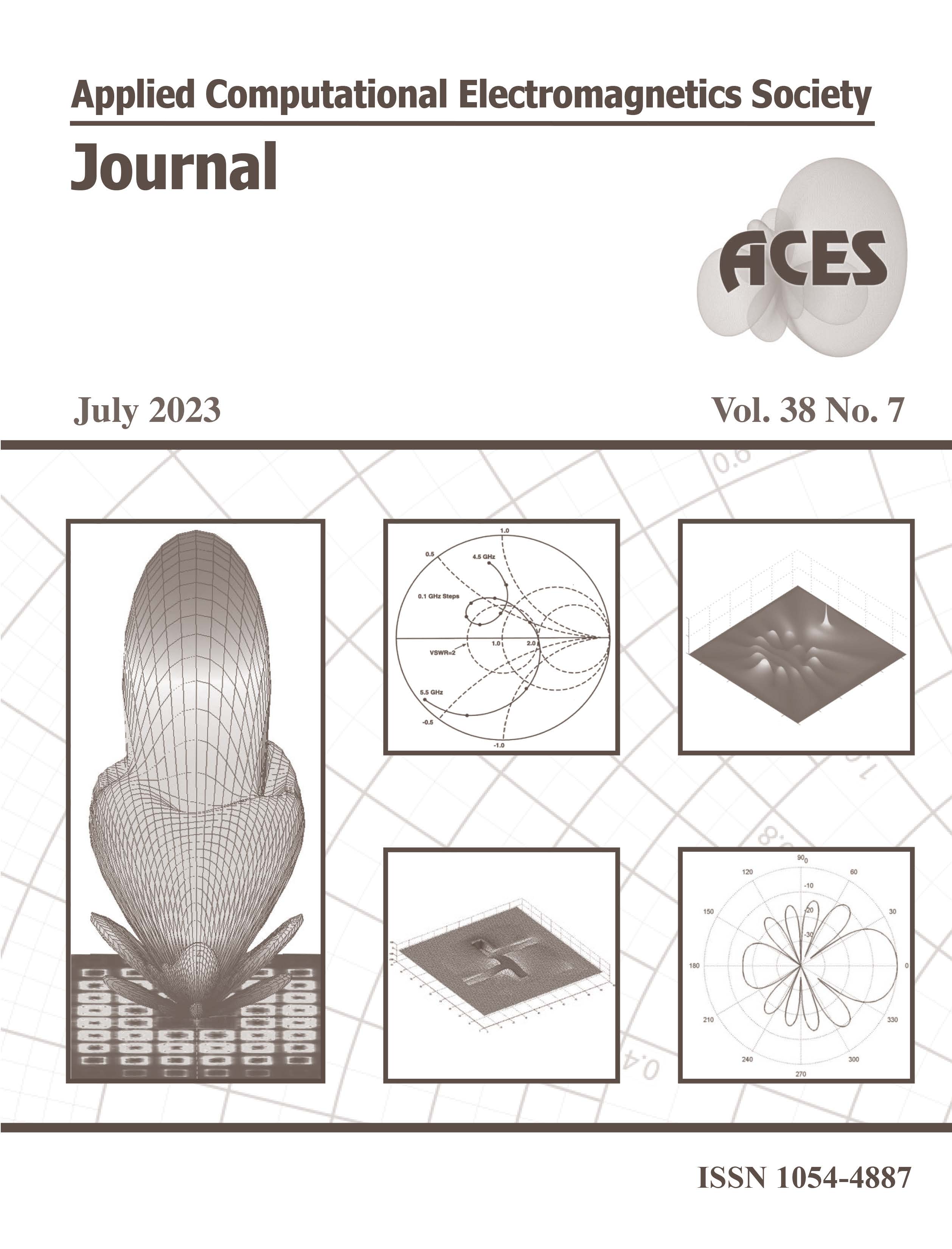Failure Mechanism Analysis of the Stochastic Galerkin Method in EMC Simulation Considering Geometric Randomness
DOI:
https://doi.org/10.13052/2023.ACES.J.380702Keywords:
electromagnetic compatibility, Failure Mechanism Analysis, Stochastic Collocation Method, Stochastic Galerkin Method, uncertainty simulation methodAbstract
By virtue of its high calculational accuracy and efficiency, the stochastic Galerkin method (SGM) has been successfully applied many times in electromagnetic compatibility (EMC) simulation in recent years. This paper proposes a calculating example taking geometric uncertainty factors into consideration. As is proved in the paper, there is a relatively large error when using the SGM to solve the example mentioned above. According to failure mechanism, the fundamental reason of the failure of the simulation lies in the additional error caused by using numerical integration to solve the inner product formula. Meanwhile, it is proved that no additional errors are introduced when using the stochastic collocation method (SCM), so the SCM is better than the SGM in stability. In the end, the paper revised the general selective strategy for uncertainty analysis methods, thus providing theoretical basis for their universal application in EMC field.
Downloads
References
S. A. Pignari, S. Giordano, and G. Flavia, “Modeling field-to-wire coupling in random bundles of wires,” IEEE Electromagnetic Compatibility Magazine, vol. 6, no. 3, pp. 85-90, Nov. 2017.
H. Xie, J. F. Dawson, J. Yan, A. C. Marvin, and M. P. Robinson, “Numerical and analytical analysis of stochastic electromagnetic fields coupling to a printed circuit board trace,” IEEE Transactions on Electromagnetic Compatibility, vol. 62, no. 4, pp. 1128-1135, Aug. 2020.
Y. Zhang, C. Liao, R. Huan, Y. Shang, and H. Zhou, “Analysis of nonuniform transmission lines with a perturbation technique in time domain,” IEEE Transactions on Electromagnetic Compatibility, vol. 62, no. 2, pp. 542-548, April 2020.
A. Gillman, A. H. Barnett, and P.-G. Martinsson, “A spectrally accurate direct solution technique for frequency domain scattering problems with variable media,” BIT Numerical Mathematics, vol. 55, no. 1, pp. 141-170, Aug. 2013.
J. Bai, G. Zhang, L. Wang, and T. Wang, “Uncertainty analysis in EMC simulation based on improved method of moments,” Applied Computational Electromagnetics Society Journal, vol. 31, no. 1, pp. 66-71, Jan. 2016.
R. Edwards, A. Marvin, and S. Porter, “Uncertainty analyses in the finite difference time domain method,” IEEE Transactions on Electromagnetic Compatibility, vol. 52, no. 1, pp. 155-163, Feb. 2010.
Z. Fei, Y. Huang, J. Zhou, and Q. Xu, “Uncertainty quantification of crosstalk using stochastic reduced order models,” IEEE Transactions on Electromagnetic Compatibility, vol. 59, no. 1, pp. 228-239, Feb. 2016.
P. Manfredi, D. V. Ginste, I. S. Stievano, D. De Zutter, and F. G. Canavero, “Stochastic transmission line analysis via polynomial chaos methods: An overview,” IEEE Electromagnetic Compatibility Magazine, vol. 6, no. 3, pp. 77-84, Nov. 2017.
P. Manfredi, D. V. Ginste, D. De Zutter, and F. G. Canavero, “Generalized decoupled polynomial chaos for nonlinear circuits with many random parameters,” IEEE Microwave & Wireless Components Letters, vol. 25, no. 8, pp. 505-507, Aug. 2015.
P. Manfredi, R. Trinchero, and D. V. Ginste, “A perturbative stochastic Galerkin method for the uncertainty quantification of linear circuits,” IEEE Transactions on Circuits and Systems, vol. 67, no. 9, pp. 2993-3006, 2020.
T.-L. Wu, F. Buesink, and F. Canavero, “Overview of signal integrity and EMC design technologies on PCB: Fundamentals and latest progress,” IEEE Transactions on Electromagnetic Compatibility, vol. 55, no. 4, pp. 624-638, Aug. 2013.
B. Xia, Y. Chen, W. Yang, Q. Chen, X. Wang, and K. Min, “Stochastic optimal power flow for power systems considering wind farms based on the stochastic collocation method,” IEEE Access, vol. 10, no. 1, pp. 44023-44032, April 2022.
Y. Chi, B. Li, X. Yang, T. Wang, K. Yang, and Y. Gao, “Research on the statistical characteristics of crosstalk in naval ships wiring harness based on polynomial chaos expansion method,” Polish Maritime Research, vol. 24, no. s2, pp. 205-214, Aug. 2017.
J. Bai, G. Zhang, D. Wang, A. P. Duffy, and L. Wang, “Performance comparison of the SGM and the SCM in EMC simulation,” IEEE Transactions on Electromagnetic Compatibility, vol. 58, no. 6, pp. 1739-1746, Dec. 2016.
J. Bai, G. Zhang, L. Wang, and D. Alistair, “Uncertainty analysis in EMC simulation based on stochastic collocation method,” IEEE Electromagnetic Compatibility Magazine, pp. 930-934, Sep. 2015.
M. Moradi, V. Nayyeri, S.-M. Sadrpour, M. Soleimani, and O. M. Ramahi, “A 3-D weakly conditionally stable single-field finite-difference time-domain method,” IEEE Transactions on Electromagnetic Compatibility, vol. 62, no. 2, pp. 498-509, April 2020.
R. Tsuge, Y. Baba, H. Kawamura, and N. Itamoto, “Finite-difference time-domain simulation of a lightning-impulse-applied ZnO element,” IEEE Transactions on Electromagnetic Compatibility, vol. 62, no. 5, pp. 1780-1786, Oct. 2020.
A. P. Duffy, A. Orlandi, and Z. Gang, “Review of the feature selective validation method (FSV). Part I-Theory,” IEEE Transactions on Electromagnetic Compatibility, vol. 60, no. 4, pp. 814-821, Aug. 2018.
A. Orlandi, A. P. Duffy, and Z. Gang, “Review of the feature selective validation method (FSV). Part II-Performance analysis and research fronts,” IEEE Transactions on Electromagnetic Compatibility, vol. 60, no. 4, pp. 1029-1035, Aug. 2018.




